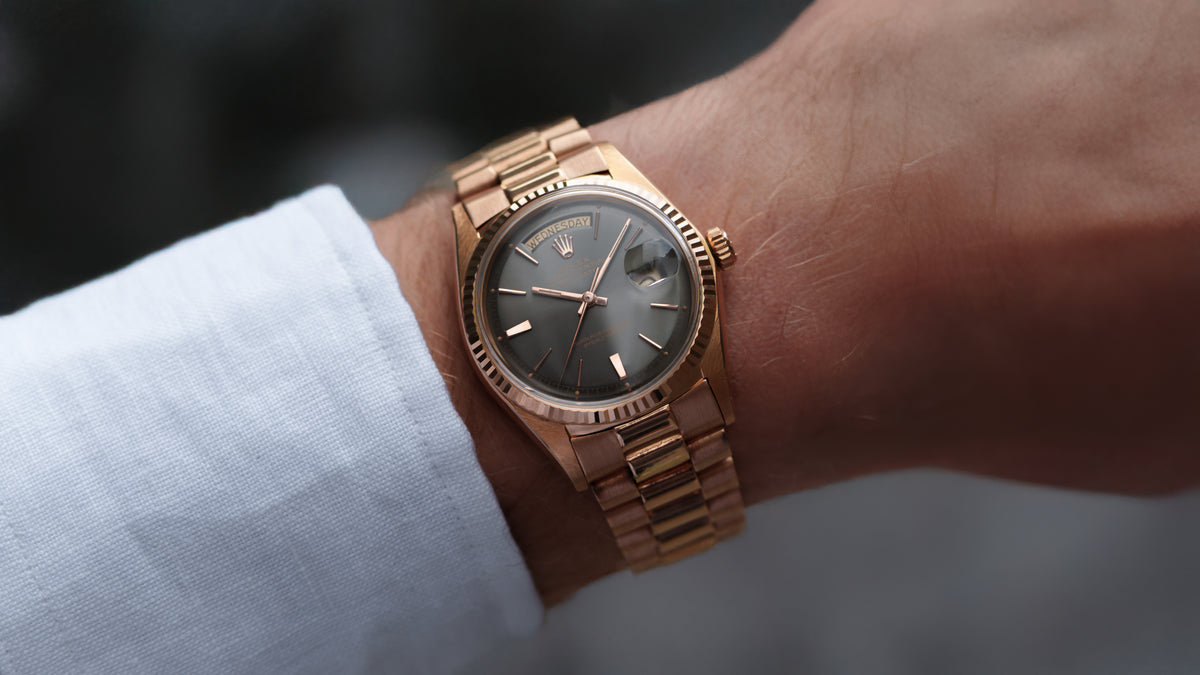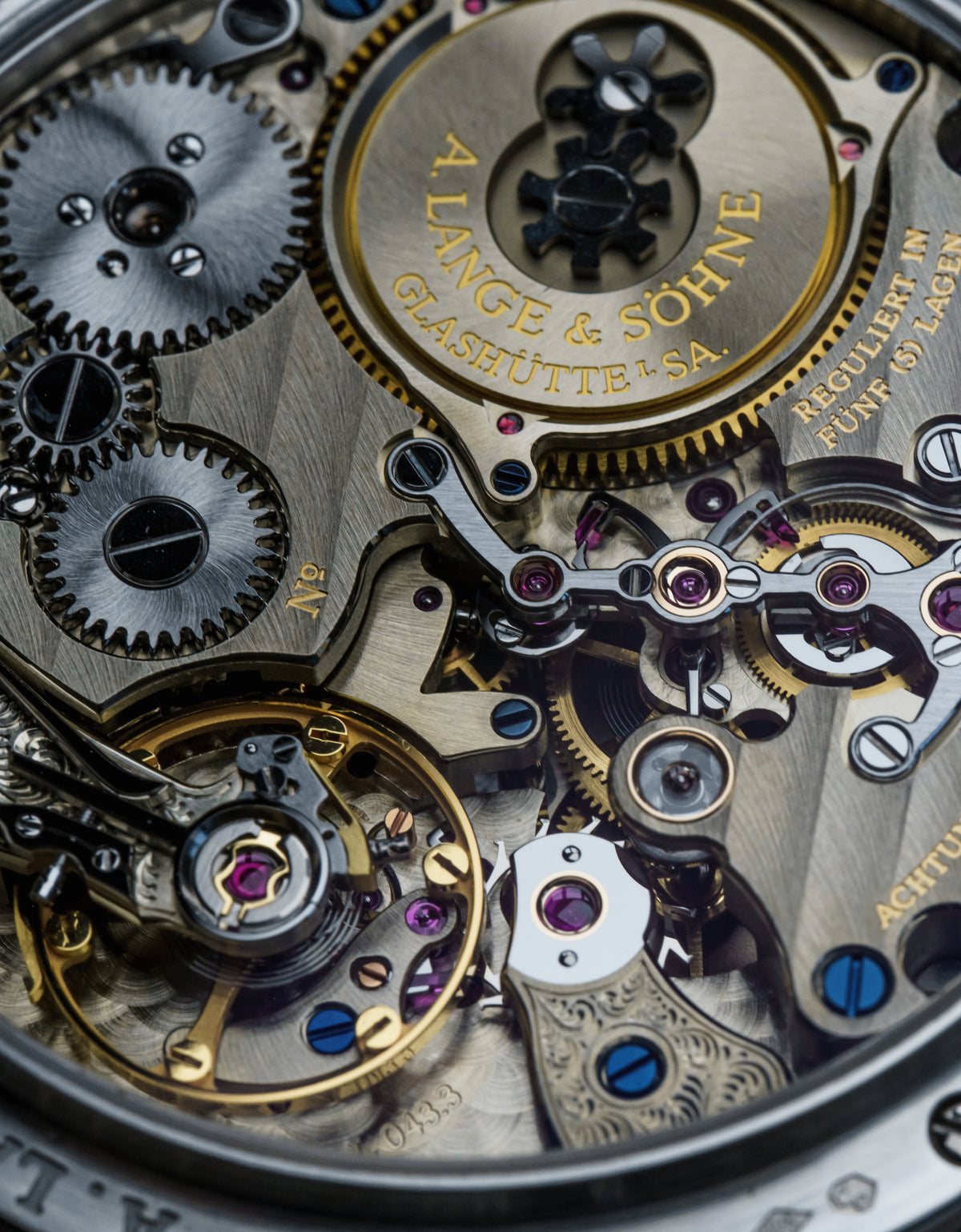Türler Dial 4178 Vacheron Constantin Chronograph in Pink Gold
In 1950, you had few options if you wanted a chronograph that leaned more toward dressing than driving. You could wander down to Patek Philippe and grab a 1463. In retrospect, good move. Audemars Piguet would sell you a Valjoux 13 VZAH ref. 5522, which is quite an amazing thing, but they only sold one to the best of everyone’s knowledge. And Vacheron would sell you this: the 4178. Widely acclaimed as one of the most elegant chronograph designs of the mid-century, its lugs are so attractive that Vacheron barely changed their design at all for the Les Historiques reissue; unchanged, it still looked perfectly modern.


In rose gold, the 4178 was made in 280 examples. But there are only two examples known the market with the this Türler signature at 6. Türler was a bit of a mid-century European Tiffany, a powerful retailer whose clients included one Mr. Winston Churchill. Seeing their signature on a dial is always a treat, but particularly in this pink-on-pink chronograph with blued steel hands and applied dual Romans. It uses a VC calibre 434, which is a Valjoux VZ 13′ ébauche (a separate run was also made with the calibre 492).
I frequently lament the homogeneity of modern case and lug designs, en masse devoid of the creativity of the last century. Straight or twisted is the default answer. But the mid-century was drastically more creative, and designs ranged from Audemars Piguet ref. 1533 to Patek 2431 with its ‘Flame’ profile. This design is less expressive but beautifully refined, an expanding profile cut off at 2/3 with a steeply angled end: not teardrop nor straight, its own thing. The proportion is perfect and that’s probably why it lives on in Vacheron’s history, like the Speedmaster Pro’s twisted lug it simply was perfect from inception.

The 4178 has always stayed a little under the radar. Values range widely depending on the desirability of the dial and metal. Yellow gold is most common, followed by pink gold, then bimetal, then steel. The contrast of value is drastic. A steel example with an incredibly hot salmon pulsations dial in steel sold through Phillips in ’21 for 457K USD. But a standard dial in yellow gold will sell around 30K still today, in great condition. This is a reference that is made in nuance. And that’s as things should be in vintage, a watch which rewards study. For what it’s worth, it’s one of only a handful of watches whose proportions I can honestly call sensual. Maybe I’m a bit strange, but there we are.
This one appears quite honest and unrestored. The dial has a few light spots and patina around the subs as frequently seen. The case is sharp, lightly polished, but with full proportion. The little bit of oxidation around the lug gap is perfectly normal in vintage gold alloys. It’s honest, not overly restored, and beautiful. It comes from a well-regarded Miami retailer.









































0 comments
Write a Comment